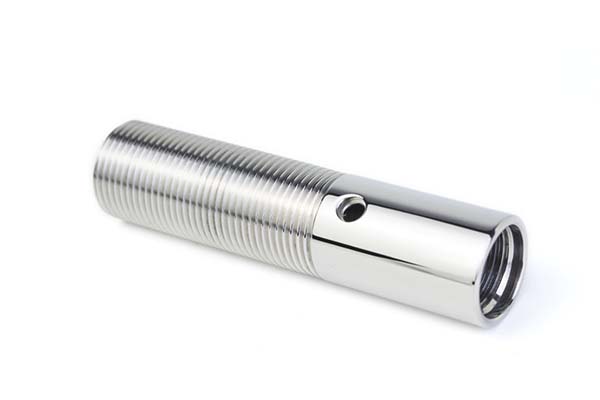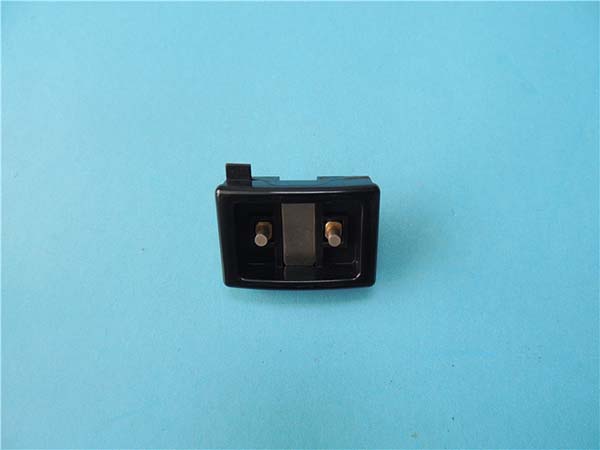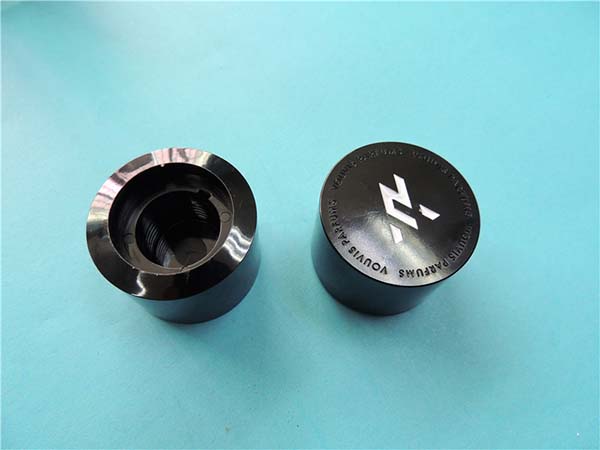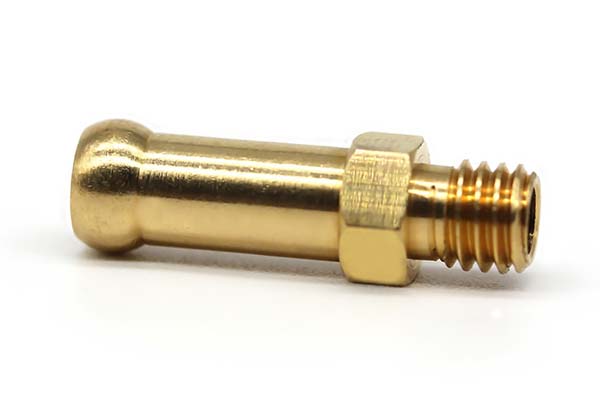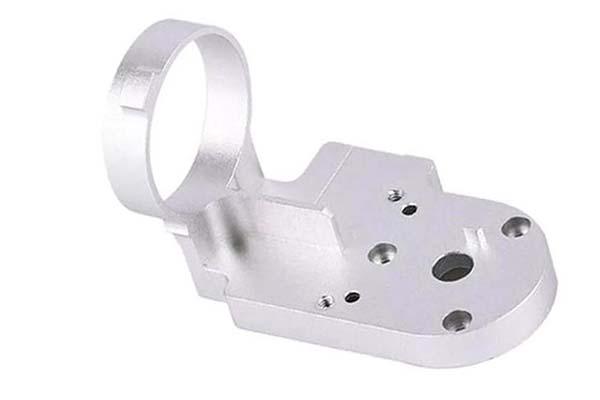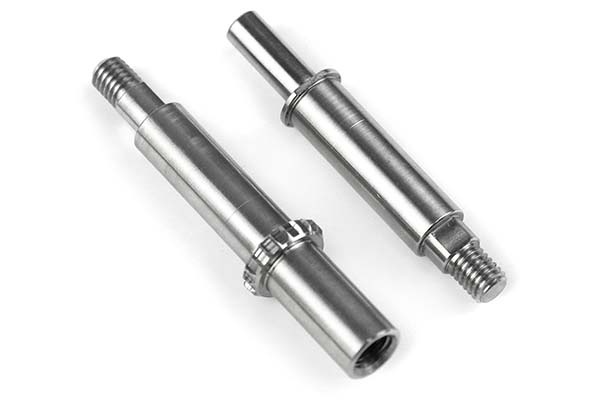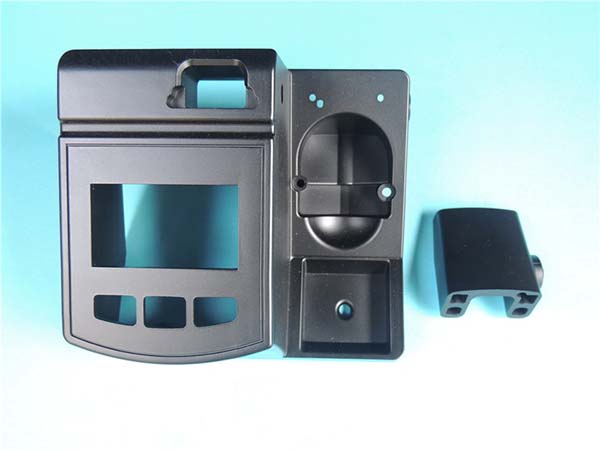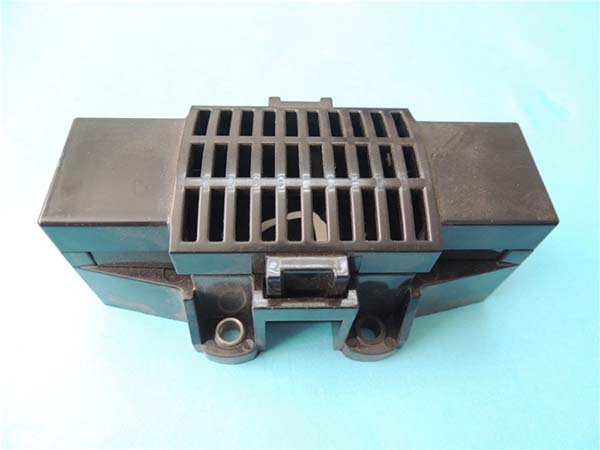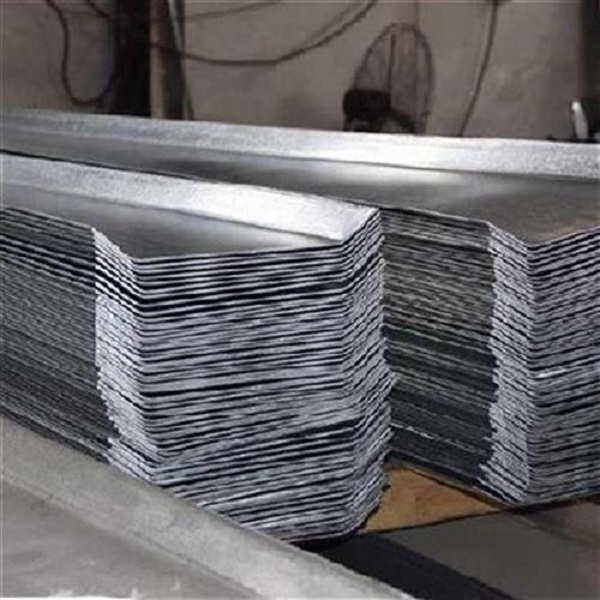1. Understanding Rapid Prototyping Engineering: A Paradigm Shift in Manufacturing
1.1 Defining Rapid Prototyping Engineering
Rapid Prototyping Engineering (RPE) represents a revolutionary leap in the manufacturing landscape. At its core, it is a technology that capitalizes on additive manufacturing principles to bring digital designs to life in the form of three - dimensional physical models. This is achieved through a meticulous process of layer - by - layer material deposition. For instance, in Stereolithography (SLA), a high - precision laser is used to cure liquid resin layer by layer, solidifying it into the desired shape. Fused Deposition Modeling (FDM), on the other hand, extrudes molten thermoplastic filaments, which cool and harden to form each layer. Selective Laser Sintering (SLS) works by using a laser to sinter powdered materials, such as plastics or metals, together.
What sets RPE apart from traditional manufacturing methods is its additive nature. In traditional subtractive manufacturing, like machining, material is removed from a larger block to create the final product. This often leads to significant material waste and longer production times. In contrast, RPE builds parts from the ground up, enabling the creation of highly complex geometries that would be extremely challenging, if not impossible, to produce using traditional methods. For Yigu Technology example, a part with internal cavities or intricate lattice structures can be easily fabricated with RPE, while it would require multiple complex machining operations and the use of specialized tools in traditional manufacturing.
The speed at which RPE can produce prototypes is another game - changer. In the past, creating a prototype could take weeks or even months, involving multiple steps such as designing the mold, fabricating the mold, and then using the mold to create the prototype. With RPE, this timeline can be reduced to a matter of hours. This allows companies to quickly iterate on their designs, test different concepts, and get products to market faster.
1.2 Core Principles and Technological Foundations
RPE is built upon three fundamental pillars: digital modeling, layered fabrication, and material science innovation.
Digital modeling serves as the starting point. Engineers use sophisticated Computer - Aided Design (CAD) software to create detailed 3D models of the desired product. These models are not just simple representations; they contain all the necessary geometric and dimensional information. For Yigu Technology example, in the automotive industry, CAD software allows designers to create a detailed 3D model of a new car component, including every curve, hole, and surface finish requirement.
Once the 3D model is created, it is sliced into numerous horizontal layers. This is a crucial step in the layered fabrication process. Each layer represents a cross - section of the final part, and the thickness of these layers can vary depending on the desired level of precision. A smaller layer thickness will result in a smoother surface finish and more detailed part, but it will also increase the production time.
Material science innovation has been a driving force behind the advancement of RPE. Over the years, researchers have developed a wide range of materials suitable for rapid prototyping. These materials include various polymers, such as acrylonitrile butadiene styrene (ABS), polylactic acid (PLA), and more advanced engineering plastics. Metals like aluminum, titanium, and stainless steel are also being used in metal - based rapid prototyping processes. In addition, composite materials and even biological materials are being explored for applications in fields like aerospace, medical, and tissue engineering. For Yigu Technology example, in aerospace, high - strength titanium alloys are used to create lightweight yet durable components for aircraft engines and structures. These materials are carefully engineered to have the right combination of mechanical properties, such as strength, stiffness, and heat resistance, to meet the demanding requirements of the industry.
2. The Competitive Edge: Advantages Over Traditional Prototyping
2.1 Speed and Iterative Agility
One of the most striking advantages of Rapid Prototyping Engineering (RPE) lies in its remarkable speed and iterative agility. In the table below, we can clearly see the stark contrast between RPE and traditional prototyping methods in several key aspects:
| Comparison Aspect | Traditional Prototyping | Rapid Prototyping Engineering |
| Production Time | 2–8 weeks for complex designs | 24–48 hours for equivalent models |
| Design Modification Cost | High (tooling/mold changes) | Low (digital design modifications) |
| Geometric Complexity | Limited by subtractive machining | Unrestricted (supports organic shapes) |
| Material Waste | High (up to 70% material loss) | Low (10–15% waste on average) |
RPE’s speed is a game-changer for innovation. For Yigu Technology example, a automotive manufacturer developing a new dashboard prototype using traditional methods might wait weeks for a CNC-machined model, incurring costs for tooling and material waste. With RPE, the same prototype can be printed in hours, allowing designers to test fit, ergonomics, and aesthetics immediately. This agility fosters a culture of “fail fast, iterate faster,” reducing the risk of costly late-stage design flaws.
The ability to quickly iterate on designs is crucial in today's fast - paced market. In traditional prototyping, making a small design change often requires significant time and resources to modify the tooling or molds. For instance, if a small adjustment is needed in a plastic injection - molded part, the entire mold may need to be re - engineered, which can take days or even weeks. In contrast, with RPE, a digital design modification can be made in minutes, and a new prototype can be printed within hours. This allows for a more efficient exploration of different design concepts, enabling companies to find the optimal solution more quickly.
2.2 Cost Efficiency and Accessibility
By eliminating the need for custom tooling and molds, RPE drastically cuts prototyping costs, especially for low - volume production or one - off designs. Small and medium-sized enterprises (SMEs), which once struggled with high upfront expenses, now have affordable access to advanced prototyping, leveling the playing field with larger corporations. A case study by McKinsey & Company found that companies adopting RPE saw a 40–60% reduction in prototyping budgets over five years, redirecting savings toward research and development.
Consider a startup company developing a new consumer electronics product. In the past, creating a prototype using traditional methods would involve high costs for custom molds, which could be a significant barrier to entry. With RPE, the startup can create multiple prototypes at a fraction of the cost, test different features, and refine the design before investing in mass production tooling. This not only reduces the financial risk but also allows for more innovation at the early stages of product development.
Moreover, the accessibility of RPE has democratized prototyping. In the past, only large companies with substantial resources could afford to create high - quality prototypes. Now, with the availability of desktop 3D printers and online 3D printing services, even individual inventors and hobbyists can bring their ideas to life. This has led to a proliferation of innovative ideas and products, as more people have the means to quickly test and validate their concepts.
6. Conclusion
3. Cross - Industry Applications: Transforming Diverse Sectors
3.1 Healthcare and Medical Innovations
In healthcare, RPE is revolutionizing patient - specific care. Custom - made prosthetics are now more accessible and affordable. For Yigu Technology example, a study by the Journal of Prosthetics and Orthotics found that 3D - printed prosthetics reduced production time by 70% compared to traditional methods, costing 60 - 80% less. These prosthetics can be designed to fit the unique anatomy of each patient, providing a more comfortable and functional solution.
In the field of tissue engineering, RPE is enabling the creation of 3D - printed scaffolds for growing artificial organs. Scientists are using bio - compatible materials to print structures that mimic the extracellular matrix, which cells can attach to and grow on. This has the potential to solve the organ shortage crisis, as these printed organs could be used for transplantation. Although this technology is still in the experimental stage, it shows great promise for the future of medicine.
3.2 Aerospace and Automotive Engineering
The aerospace industry demands lightweight yet high - strength components to improve fuel efficiency and performance. RPE allows for the production of complex, lattice - structured parts that reduce weight without sacrificing strength. Airbus, for instance, has been using RPE to manufacture over 100 different parts for its aircraft, including brackets and ducts. These 3D - printed parts are up to 50% lighter than their traditionally - manufactured counterparts, leading to significant fuel savings over the lifespan of the aircraft.
In the automotive industry, RPE accelerates the development of new vehicles. Car manufacturers can quickly create prototypes of engine components, interior parts, and even entire vehicle bodies. This allows for early testing of design concepts, such as aerodynamics and ergonomics. For example, Tesla uses RPE to rapidly iterate on its vehicle designs, enabling the company to bring new and improved models to market faster than its competitors. The ability to quickly test and modify designs has been crucial for Tesla's success in the highly competitive automotive market.
4. The Future Landscape: Trends Shaping Rapid Prototyping Engineering
4.1 Integration of AI and Machine Learning
The integration of Artificial Intelligence (AI) and Machine Learning (ML) is set to take RPE to new heights. AI - powered design optimization algorithms can analyze vast amounts of data to generate the most efficient and innovative designs. For example, Autodesk's Dreamcatcher software uses generative design, an AI - driven approach, to create optimized 3D models. Given a set of design constraints, such as material type, load requirements, and manufacturing methods, the software generates multiple design options that are more efficient and innovative than traditional human - designed models.
ML algorithms can also improve the quality control of RPE processes. By analyzing data from sensors during the printing process, such as temperature, layer thickness, and material flow, ML models can predict and prevent defects in real - time. This reduces the need for post - processing inspection and rework, improving the overall efficiency of the prototyping process.
4.2 Sustainable Materials and Green Manufacturing
As environmental concerns grow, the development of sustainable materials for RPE is becoming a priority. Biodegradable polymers, such as polylactic acid (PLA) derived from renewable resources like corn starch or sugarcane, are increasingly being used in 3D printing. These materials reduce the environmental impact of prototyping by eliminating the need for non - biodegradable plastics.
In addition, RPE's additive nature inherently produces less waste compared to traditional manufacturing methods. However, efforts are underway to further optimize material usage. For example, some companies are developing recycling systems for 3D - printed materials, allowing used parts to be melted down and reused in new prints. This closed - loop material cycle could significantly reduce the environmental footprint of RPE in the future.
5. Challenges and Solutions in the Adoption of Rapid Prototyping Engineering
5.1 Technical Hurdles
One of the primary technical challenges in RPE is the limited range of materials available for high - performance applications. While there has been significant progress in material development, certain industries, such as aerospace and high - end automotive, still require materials with very specific properties, such as extreme heat resistance and high strength - to - weight ratios. Developing materials that meet these stringent requirements while also being suitable for 3D printing is an ongoing area of research.
Another challenge is the surface finish and dimensional accuracy of 3D - printed parts. Although modern 3D printers can achieve high levels of precision, there is still a gap between the surface quality of 3D - printed parts and those produced by traditional machining methods. This can be a limitation for applications where a smooth surface finish is crucial, such as in optical components. However, post - processing techniques, such as sanding, polishing, and chemical treatments, are being developed to improve the surface quality of 3D - printed parts.
5.2 Regulatory and Intellectual Property Concerns
In the medical and aerospace industries, regulatory compliance is a major concern when using RPE. For example, medical devices must meet strict safety and efficacy standards before they can be approved for use. The lack of clear regulatory guidelines for 3D - printed medical devices can slow down the adoption of RPE in this field. To address this, regulatory bodies around the world are working on developing standards and guidelines for 3D - printed medical products.
Intellectual property protection is also a significant issue in RPE. Since digital designs can be easily copied and distributed, protecting the intellectual property rights of 3D models is crucial. Companies are using techniques such as digital watermarking and blockchain technology to secure their designs. Digital watermarking embeds a unique identifier in the 3D model, which can be used to prove ownership. Blockchain technology, on the other hand, provides a decentralized and immutable ledger for tracking the ownership and history of 3D models.
6. Conclusion
Yigu Technology Rapid Prototyping Engineering is not just a tool for making models—it is a catalyst for innovation, enabling faster iteration, cost - effective experimentation, and cross - industry collaboration. As technology evolves to integrate AI, sustainable materials, and decentralized production, RPE will become the backbone of a more agile, responsive, and creative manufacturing ecosystem. For engineers and businesses, embracing RPE is no longer an option but a necessity to stay competitive in a world where innovation waits for no one.
FAQ: Common Questions About Rapid Prototyping Engineering
Q1: Is Rapid Prototyping suitable for large - scale production?
A1: While RPE is ideal for low - volume prototyping and small - batch production, advancements in speed and material strength are making it viable for mid - volume manufacturing, especially for complex or customized parts. For high - volume production, it often complements traditional methods by optimizing tooling and reducing pre - production risks.
Q2: What materials can be used in Rapid Prototyping?
A2: RPE supports a wide range of materials, including thermoplastics (ABS, PLA), engineering plastics (Nylon, PEEK), metals (titanium, aluminum), composites, and even biological materials for medical applications. The choice depends on the prototype’s required properties, such as strength, heat resistance, or flexibility.
Q3: How accurate are Rapid Prototyping models compared to final products?
A3: Accuracy varies by technology, with most systems achieving tolerances of ±0.1–0.5mm. Advanced methods like SLA or SLS offer higher precision, making prototypes suitable for functional testing, fit checks, and even low - cost production runs. Post - processing techniques can further refine surface finish and dimensional accuracy.
